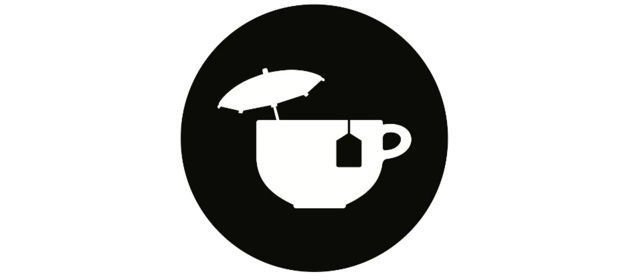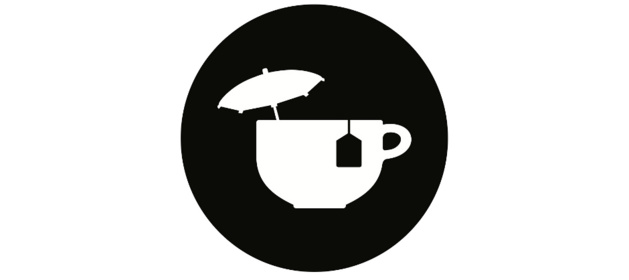
Credit DR
“Dry January” was initially launched by Alcohol Concern, a charity which fights against the harm of alcoholism (or, at least, that is what it claims) and is supported by the British public health services. The British “binge drinking” culture is no longer a secret: drinking a high amount of alcohol in a short period of time in order to get drunk more quickly is an increasingly widespread practice, especially in England. Here, and in particular in student cities, young people gulp down one shot after another in pubs or clubs. Especially the “Freshers’ Week”, or integration week, quickly turns into frantic nights of boozing. This social trend is violently criticized by a certain number of organisations and is often regarded as reflecting the deep uneasiness of a new generation lost in the middle of a world they cannot grasp, a world that doesn’t belong to them anymore because the economic crisis make it impossible to find a job, and a world where values, such as family and marriage, no longer make any sense at all.
One thing’s for sure: the last study conducted by the World Health Organisation and published in the Telegraph, does not bring any good news. In this study, “binge drinking” means drinking more than six units of alcohol in a row. The results are striking: 28% of British respondents declared they had had an episode of this kind in the past month. That is to say it is almost twice the global average (16%). The country ranks 13th out of 196 – ahead countries such as Estonia (23.3%), the Ukraine (22.6%), Hungary (26.3%), but also Russia (19.1%). The most affected countries turn out to be Austria (40.5%), the Czech Republic (38.9%), and Lithuania (36.6%). However, it can be pointed out that 29.4% of French respondents were affected as well. In terms of global alcohol consumption, Great Britain is among the 25 most affected countries, with a yearly average consumption of 11.6 liters per subject above 15, that is to say twice the average consumption of 6.2 litters in the surveyed countries. Not surprisingly, the first-ranked countries are Belarus (17.5 litters), Moldavia (16.8 litters), Lithuania (15.4 litters), and Russia (15.1 litters). Then again, France, with 12.2 litters, draws attention; however, this is not a big surprise considering the French tradition of accompanying meals with a glass of wine.
Although in the United Kingdom “binge drinking” is often associated to “lad culture”, this is restrictive when looking more closely at the figures. The concept of “lad culture” is represented by stereotyped and so-called “manly” young men, that is to say big fans of sports (especially of football, although rugby teams are more popular in British universities and equally touched), alcohol (particularly in excessive amounts), beautiful young ladies, sex, and sexist jokes. Actually, according to that very study, 35.5% of men and 20.9% of women “binge drank” at least once in the previous month. In total, 44% of 15 year-old girls and 39% of same-aged boys declared having been drunk at least twice.
According to a survey conducted by the European School Survey Project on Alcohol and Other Drugs (ESPAD) in 35 countries and unveiled by the BBC, 26% of 15 and 16 year-old boys and 29% of girls engaged in “binge-drinking” (consumption of 5 alcoholic beverages in a row) at least three times throughout the previous month. The situation turns out to be reversed to the one you could imagine: girls are apparently keener to consume too much alcohol than boys, when the study conducted in 1999 indicated that 33% of boys and 27% of girl this age were concerned.
In light of these figures, and insofar as the impact of alcohol on health is nowadays well known, we cannot be surprise when some people ring the alarm and suggest ideas such as “Dry January”. The benefits of such an idea on health are skeptical. According to a research conducted by journalists from the New Scientist, “Dry January” reduces in the short term the fat accumulated in the liver as well as the level of glucose in blood and weight. Sleep and concentration would be improved as well; however, no study was able to demonstrate the long-term benefits, especially as there is a risk to return to the usual level of consumption within the next month, or even to get to a higher level to “offset” the abstinence. Moreover, when you stop drinking, you tend to stay home more often at night, in order to avoid questions (especially women, who are quickly assumed to be pregnant), or to resist the temptation, which drive some people to criticize the very idea of “Dry January”.
A new Internet phenomenon
However, “Dry January” has taken a new turn. Now, you can be sponsored for not drinking for a month thanks to fundraising sites. Then, you give the funds to Cancer Research UK, both research centre and charity which fights against cancer. Although it seems hard to see what is bad about this idea (this is a real effort of taking care of yourself and of giving to a good cause), it reminds us of other controversial projects that appeared on the web in recent years and have created a buzz: the “Ice Bucket Challenge” on the one hand and the “Smartnominations” on the other hand.
The “Ice Bucket Challenge” is a kind of test involving dumping a bucket of ice water on your head after you have been nominated by someone who has already done it. The purpose is on the one hand to draw attention on the Amyotrophic lateral sclerosis (ALS, also well known as Charcot disease) since you have to post a video as a proof and one the other hand, to raise funds dedicated to research and to support patients. The ALS is an orphan disease. It is characterised as a degeneration of motor neurons, the nerve cells that make muscle produce movements.
Stephen Hawking, the famous British physician and cosmologist suffers from this disease. The challenge backed by many political as well as artistic personalities (for instance George W. Bush and Benedict Cumberbatch) went viral and the number of videos posted on social networks dramatically increased. The campaign was effective and 41.8 million of dollars have been raised between July, 29th and August 21st. Yet, the results are questionable. It cannot be denied, of course, that such a good action makes people optimistic. But we would be a little naïve should we stop here. First, just as some critics said, seeing what people are ready to give when such campaigns, in which they involve since they are personally nominated to do it, are carried out is a problem, when other associations, especially those fighting against malaria, could help more people.
It is clear that making a donation to ALS is a good and useful action, but it is a shame that this enthusiasm is achieved only by organising this king of challenge. Moreover, let’s not forget that social networks are a way to reflect the image we want to give of ourselves. Taking part of this kind of test make us seem generous. Even if it helps ourselves or people who are following us on Facebook or Twitter to become aware, the fact is that we still don’t participate financially: it that case, this is perhaps more about our clear conscience, even our reputation, than about the disease itself.
Another example which led to a similar debate is the “Smartnominations”. Initially, the idea was to make fun of the “Neknominations”, in other words to film yourself drinking a glass of alcohol in one gulp, before nominating someone else to do the same. The “Smartnominations”, meanwhile, aim to do a good action with, then again, supporting evidence. Some voices have risen against this idea: first, since it is mostly about offering food to homeless people, it leads to issues about the right to the image, because nominees sometimes include the recipient of their gesture in their videos. Secondly, this suggests that the action is only exceptional (which is perhaps indeed the case today) when it should be common. And then, there is the same debate as for the “Ice Bucket Challenge”: is this really about helping others or about perfecting one’s image?
These challenges, which are mostly an effective way for charities to collect money, raise a certain number of questions. It is true that should their number increase, their impact would certainly gradually lower, since they would become less visible and that their repetition would unfortunately bore people; however, this phenomenon is not over yet, as proven by “Dry January”, which looks less questionable. Cancer is indeed a well-known disease that affects a lot of people, so the gesture seems to be more spontaneous. Moreover, if that helps patients to improve their life style for just one more month and to donate a certain amount of money, even greater are the benefits!




























